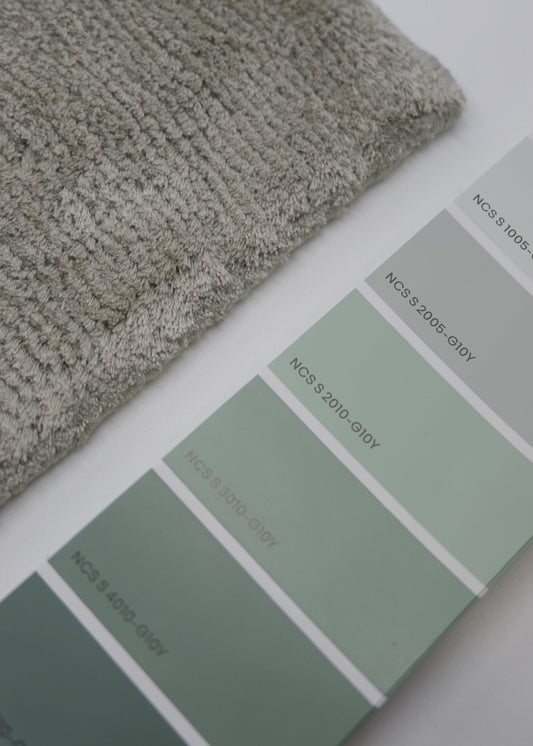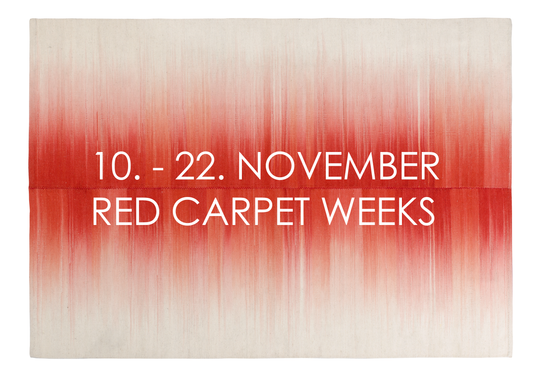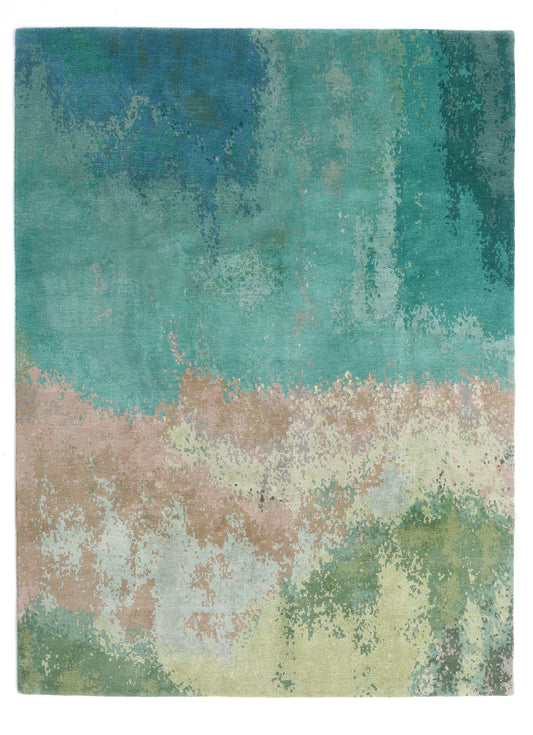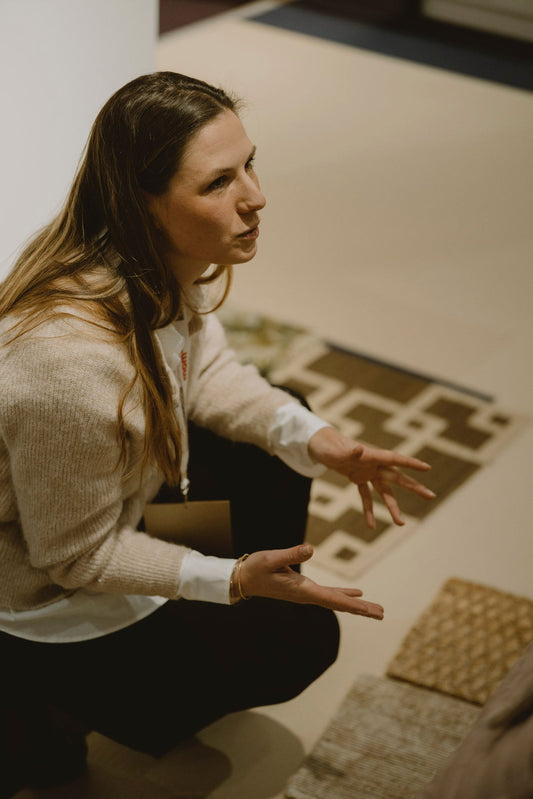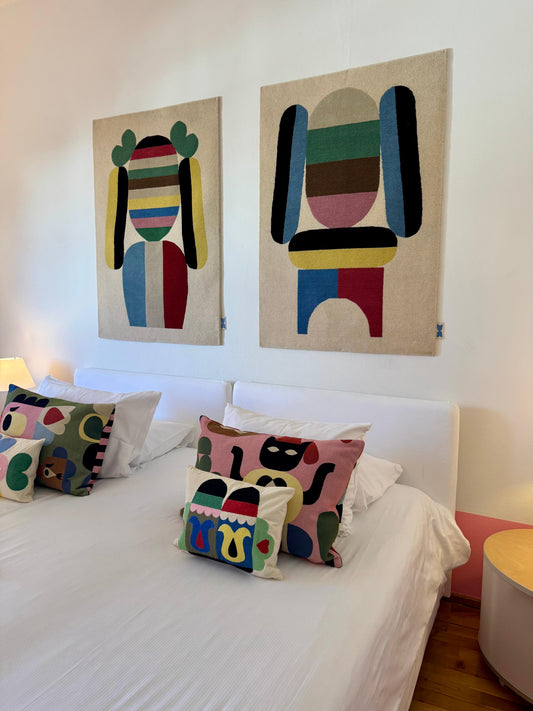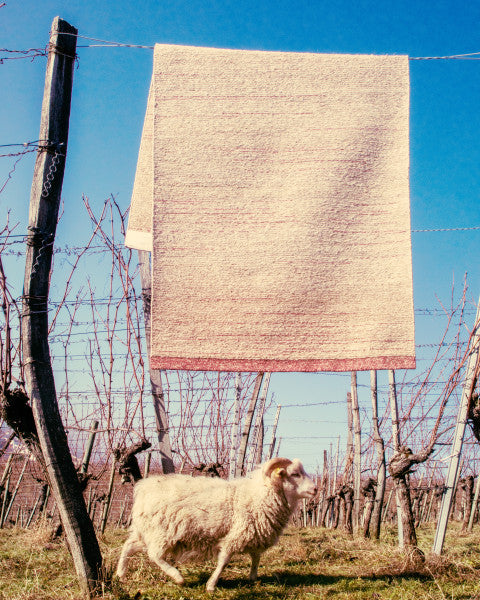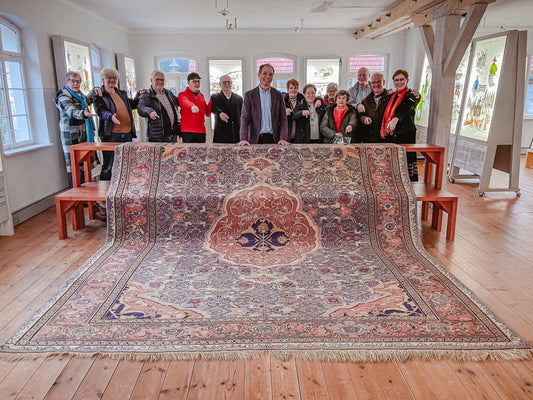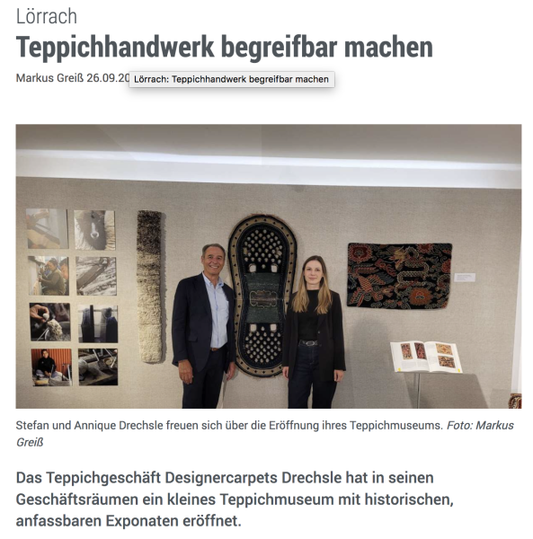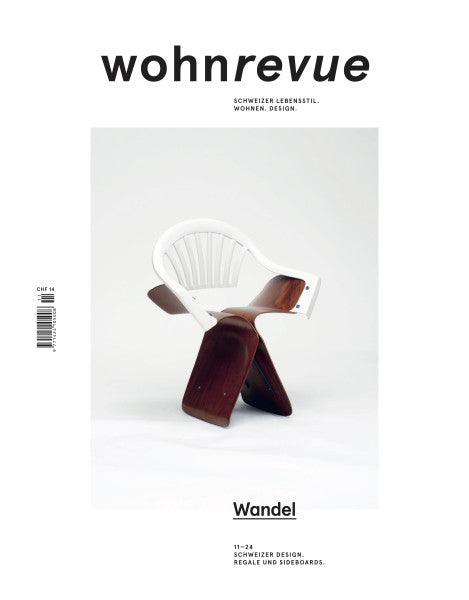Black Forest oriental carpet returns home
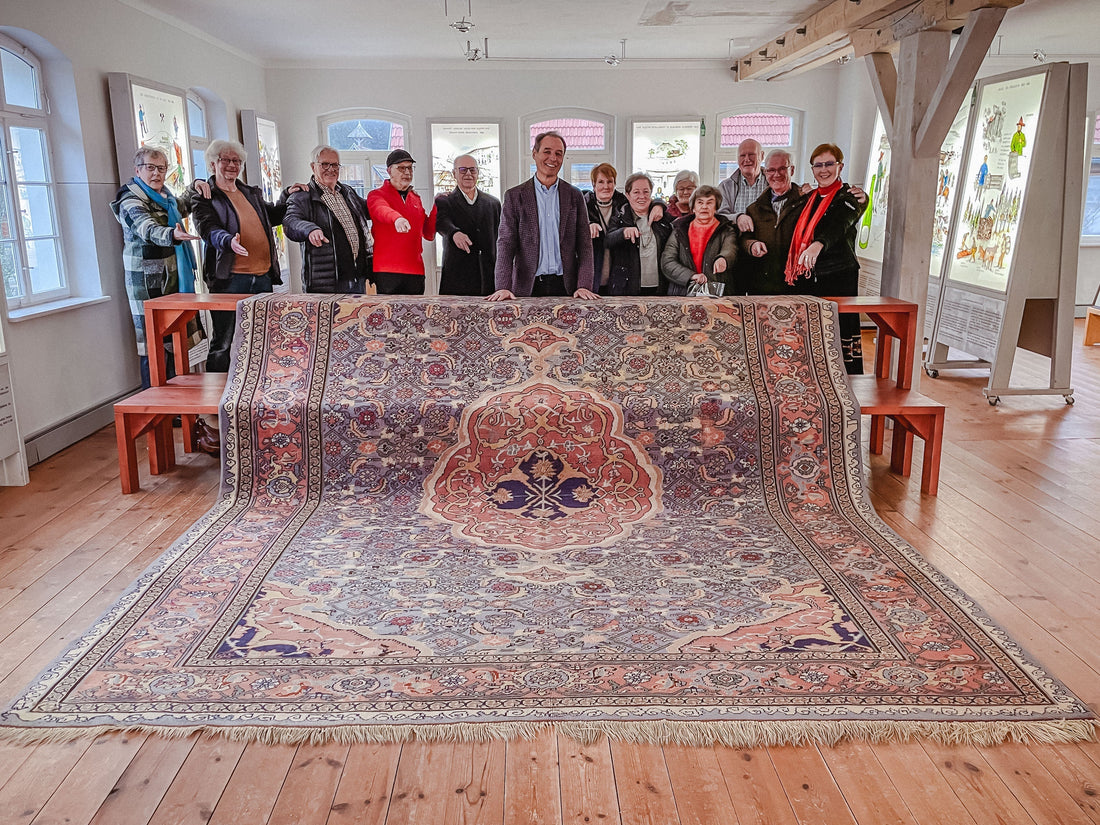
An oriental rug, handmade in the Black Forest? What reads like a newspaper hoax is actually true, as oriental rugs were woven in the buildings of the former Buhlbach glassworks between 1925 and 1945. In good times, around 450 women are said to have been employed in the carpet weaving workshop, producing the rugs with the distinctive "Made in Black Forest" patterns. One example is now returning to its place of origin on permanent loan.
Measuring just under twelve square meters, its construction and pattern suggest a classic Bijar, a Persian carpet. However, the more subdued color scheme, the spinning of the wool, the type of warp and weft, and the supporting weave of a hand-knotted carpet are not consistent with this region of origin. And this textile work of art cannot really be classified anywhere else either.
Even Stefan Drechsle, a carpet expert and managing director of a specialty store for classic and modern carpets, was puzzled. He had discovered the carpet as a special piece over fifteen years ago and acquired it. However, since the carpet's origin could not be identified, it was never offered for sale and remained untouched. It was only when Drechsle's daughter, following in her father's footsteps, inquired about the carpet that a more intensive, meticulous investigation began.
The original label bearing the factory name "OTK," which fortunately survived, provided the crucial clue. Thanks to this, the Drechsles stumbled upon an older newspaper article online that revealed the rug's origin. The result was a minor sensation: This particular rug is an oriental rug "Made in the Black Forest"—to be precise, in Baiersbronn-Buhlbach, the headquarters of OTK, Teinacher Orient-Teppich-Knüpfereien AG. "I would never have guessed that oriental carpets were once woven in the Black Forest," reports Stefan Drechsle. It was immediately clear to him, "The carpet has to go back there!" To arrange for the carpet to be returned to its homeland, he contacted Baiersbronn Touristik, which has operated the Glashütte Buhlbach Cultural Park since 2017, after the Glashütte Buhlbach Friends' Association had been the sponsor for years and fought to preserve the cultural monument.
Important economic sector in times of need
In Buhlbach, resourceful merchants had weaving looms made at a time of great economic hardship, on which Black Forest women and girls wove oriental carpets from 1925 to 1945. Carpet weaving, which was carried out in the disused glassworks in Buhlbach, thus formed an important economic sector: in the upper Murg Valley, someone from almost every household worked at the OTK, and at peak times, up to 450 employees are said to have knotted carpets on a piecework basis.
During the war, numerous Black Forest oriental carpets were returned by their owners to the former Buhlbach glassworks for safekeeping. Unfortunately, they were confiscated by the French occupying forces in 1945, transported to France, and lost there. After the factory was closed, the employees were allowed to keep the weaving looms for further homework.
One of these weaving looms is now in its former working place and can be viewed at the Glashütte Buhlbach Cultural Park. A matching carpet was previously missing.
With the approximately 36 kilogram specimen from Drechsle's collection, which he has given to the cultural park as a permanent loan, this gap is finally closed.
Skilfully displayed on a dedicated stand, visitors to the cultural park can now be inspired by the craftsmanship of oriental carpet weaving in the Black Forest of days gone by.
Article in Carpet Home / II/2025
 The original label indicates "OTK"
The original label indicates "OTK"
